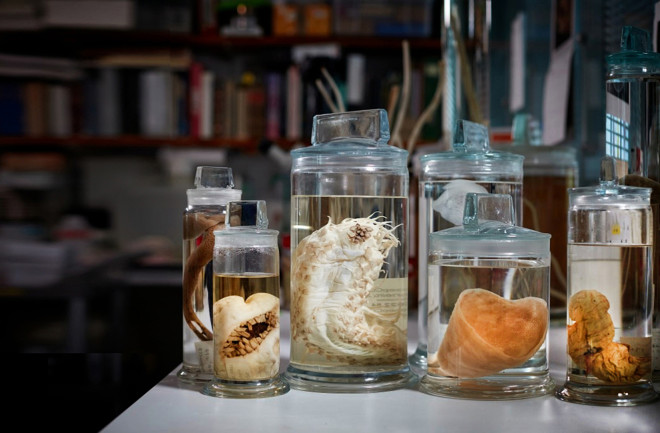Between Mexico and Hawaii, at the bottom of the Pacific Ocean, lies the Clarion-Clipperton Zone. This abyssal plain sprawls over 2.3 million square miles, over half the size of the contiguous U.S., and plunges to depths exceeding 3 miles in some places. The water here is just above freezing,and no sunlight reaches it. Yet for thousands of species that scientists know almost nothing about, the strange landscape is a happy home — for now.
The creatures in the CCZ are nothing short of bizarre: long-tentacled creatures that resemble shooting stars, bristly worms that look like they’re made of ice crystals, and a sea cucumber nicknamed “the gummy squirrel” because of its translucent, candy-yellow color and tail-like sail. Each represents a tiny fraction of the 5,142 unnamed species announced in May in the journal Current Biology.
There are a few key caveats to that number — some of those unidentified creatures might belong to the same species, for example — but, ultimately, “around 90 percent of the diversity from the area is new to science,” says Muriel Rabone, a biologist at the Natural History Museum in London and lead author of this first-ever checklist of animals in the CCZ.
Back on land, however, an ongoing debate about deep-sea mining threatens to upend this hidden world. The unusually high concentration of bumpy, metal-bearing nodules on the region’s seafloor makes it an attractive mining prospect; these nodules have grown over the course of millions of years, as metals like manganese, iron and cobalt dissipated from the seawater and clung to small fragments of shell or bone. “It is one of the slowest known geological processes,” says Rabone.
The potato-sized lumps could help fuel the rising demand for rechargeable batteries in electric cars and other electronics — though, perhaps, at a cost. Deep-sea mining has not yet begun anywhere, but budding tools include AI-equipped robots that select and grab nodules or dredge pumps that stir up sediment and suction the nodules back to the surface.
The potential carbon footprint of such activities is unknown, Rabone says, and might even outweigh the proposed benefits of electric vehicles in curbing climate change. “People don’t know what the environmental risk will be, and what the associated socioeconomic risk will be,” she says.
To remedy this lack of knowledge, scientists like Rabone have worked for the past few decades to survey the life found in the deep sea, with a goal of learning what lives where and how different populations interact. Because the CCZ is too deep for easy human exploration, researchers turn to box corers: These stainless steel contraptions take samples of sediment from the seafloor and return them to scientists waiting on ships above.
“We sift all the mud, we take a look at all the nodules, we look at all the animals on the nodules, take photos, catalog everything,” says Rabone. The May study compiled results from similar missions undertaken in recent years.
Stefanie Kaiser, a biologist at the Senckenberg Research Institute and Natural History Museum in Germany, also studies life in the CCZ. Though she was not involved with the recent paper, she thinks the estimate of new species is a conservative one. And the fact that we know next to nothing about these creatures, or what they do for the planet, is why we should protect them, she adds.
As laws currently stand, 54 percent of the deep ocean — including the CCZ — is considered “the common heritage of mankind,” unavailable for mining until a code is established to mitigate ecological damage and ensure global sharing of the wealth generated. The 1982 United Nations Convention on the Law of the Sea, which established this rule, further states that if no code is reached within two years of a country putting forth a proposal to mine in this area, mining can begin.
And in the summer of 2021, the Oceanic nation Nauru, along with Canadian mining firm The Metals Company, requested to do just that in the CCZ. As of July 9, 2023, with no code agreed upon and the waiting period expired, the region became, at least theoretically, open for business. Later that month, the International Seabed Authority, a U.N. regulatory body, postponed the possibility of mining until 2024 at the earliest.
Rabone hopes that further studies will inform and even temper these interests. She notes that researchers have isolated anticancer compounds from sponges in the past, and that the CCZ’s animals could someday provide similar benefits. “What we potentially lose if we mine,” she says, “is an important question for us to ask.”
This story was originally published in our January February 2024 issue. Click here to subscribe to read more stories like this one.

